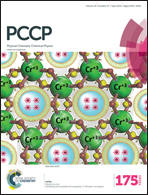Theory for spiralling ions for 2D FT-ICR and comparison with precessing magnetization vectors in 2D NMR
Abstract
Two-dimensional (2D) Fourier transform ion cyclotron resonance (FT-ICR) offers an approach to mass spectrometry (MS) that pursuits similar objectives as MS/MS experiments. While the latter must focus on one ion species at a time, 2D FT ICR can examine all possible correlations due to ion fragmentation in a single experiment: correlations between precursors, charged and neutral fragments. We revisited the original 2D FT-ICR experiment that has hitherto fallen short of stimulating significant analytical applications, probably because it is technically demanding. These shortcomings can now be overcome by improved FT-ICR instrumentation and computer hard- and software. We seek to achieve a better understanding of the intricacies of the behavior of ions during a basic two-dimensional ICR sequence comprising three simple monochromatic pulses. Through simulations based on Lorentzian equations, we have mapped the ion trajectories for different pulse durations and phases.


 Please wait while we load your content...
Please wait while we load your content...